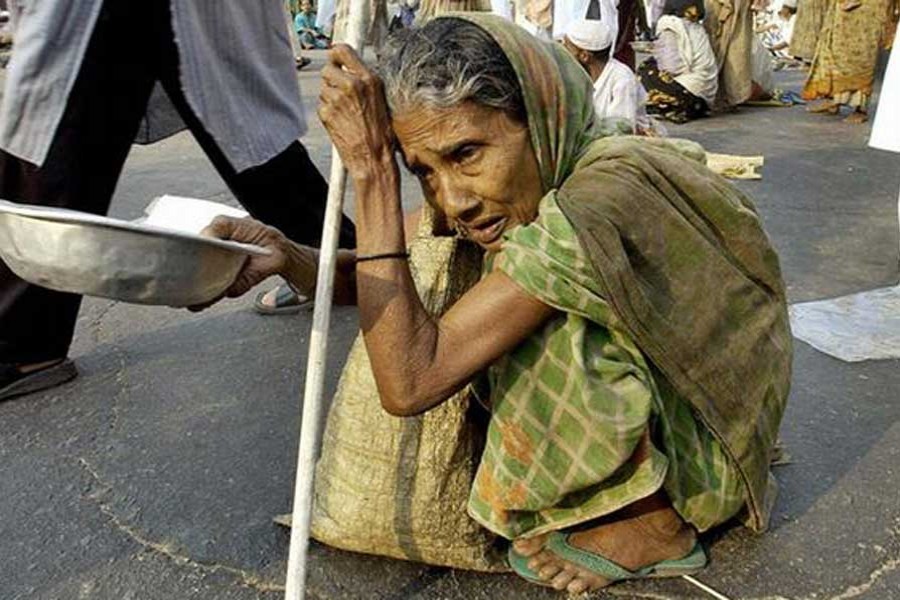The once ubiquitous beggars of Dhaka are making a comeback. They have swung into the act quite insidiously. In order to evade the notice of the alert public and the law enforcers, they have invented novel guises. Almost all of them are now found on public transports like buses, exploiting the gullible people's soft corners of the mind. One might call the device emotional blackmail of sorts.
After the crackdown on street beggars aimed at sending them to centres for vagrants, launched around two decades ago, began losing steam the begging people were found again at the street corners. These days the mention of the anti-beggar drives draws vacant looks from many. The grim truth is few beggars, both young and old, want to remain confined to a virtual prison. In these enclosures, they are reportedly given free meals and accommodation. Many are imparted training in different types of handiwork. In exchange the craftspeople are given small portions of the sales proceeds. All this is, undoubtedly, a laudable venture. But there is an irony: the 'interned' beggars are not satisfied with this 'secure' life. Begging throughout the day fetches them lucre many times more than they can make at the shelters. Moreover, this profession nowadays opens outlets to becoming 'rich'.
It's alleged that many expert beggars with genius for acting have built their own humble residences in their villages. Some are said to have invested money in informal savings schemes. Many want to welcome their efforts. But they cannot leave begging. It's true the number of street beggars has been on sharp decline over the years. They are also not seen in middle and lower-middle class neighbourhoods like before. Even if a handful of them are found begging house-to-house, they stun the house-owners by refusing to take rice, the age-old form of alms. Unlike in the past, what they want is money. It keeps their image neat.
These days, urban experts may feel tempted to call Dhaka a beggar-free city. Outwardly, there are few beggars at street corners or on footpaths in the busy commercial districts. It's in the areas adjacent to the Azimpur Graveyard on the holy night of Shab-e-Barat where one can see beggars coming from every part of the country. Muslims consider alms-giving a pious duty on that night. Besides, on the days prior to the festival of Eid-ul-Fitr, the capital gets literally swarmed by street beggars. In those days, most of them rush to the passengers inside cars stuck at signals. They just knock at the car windows for money. Rickshaw and auto-rickshaw passengers are also not spared.
The begging inside buses goes on without any let-up. According to many commuters, the number of beggars continues to soar there. Giving up the conventional style of direct alms-seeking, the beggars nowadays adopt highly ingenious techniques of begging. They pose as destitute persons in need of money for critical surgeries on their blood relatives or on themselves. Many board buses with awfully ill or 'near-dead' babies. They beg for money to provide treatment to their sick babies. A lot of seasoned Dhaka commuters dismiss these treatment seekers on buses as sheer cheats. It's now a well-known fact that a section of criminal gangs rents out ill or highly sedated small children to female beggars in their heinous style of begging.
There are a section of elderly males who seek money for completing a half-constructed orphanage or a 'madrassa'. Like in all other sectors, begging in the country's cities has undergone changes in style. Innocent people experience a kind of bliss from their alms-giving. Many have little inkling that by showering their kindness on the wrong persons, they are depriving many genuine people in need of help.


